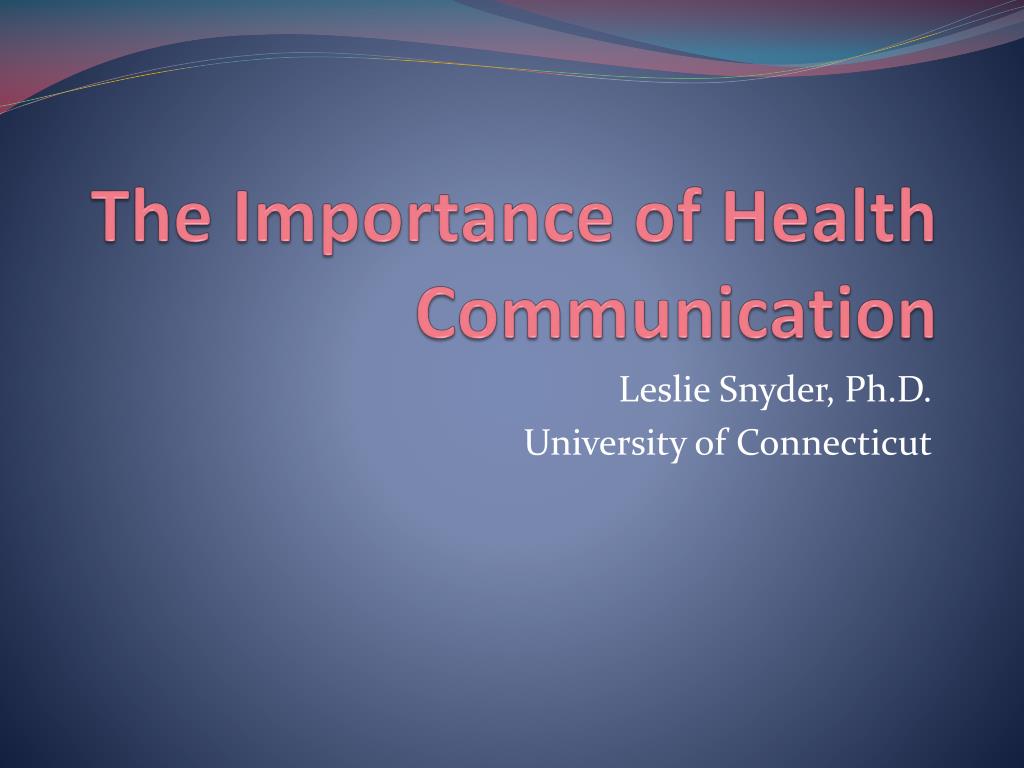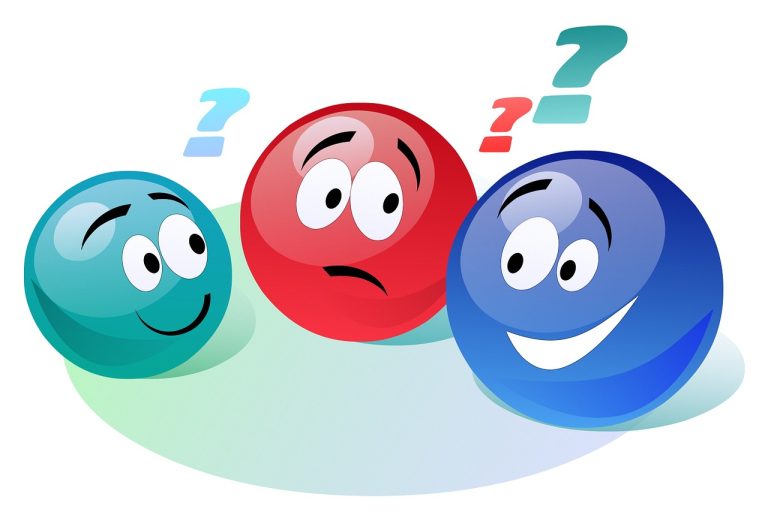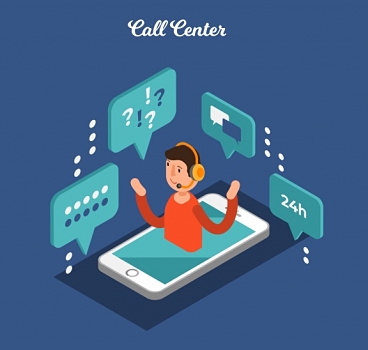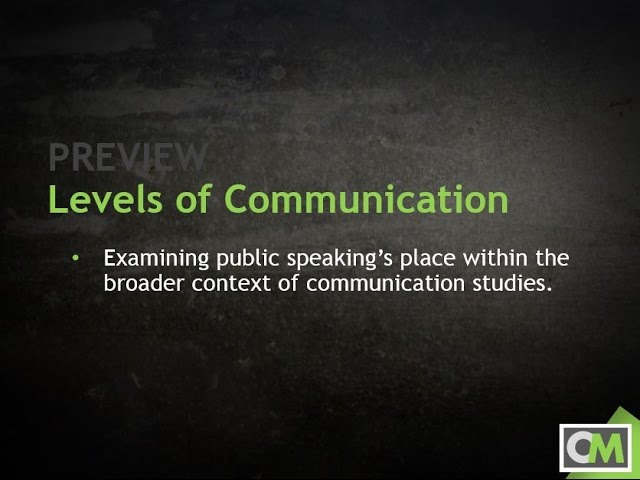Explore Why Health Communication is Important
Health communication is important because it plays a vital role in promoting positive health behaviors and improving health outcomes. Effective communication helps individuals make informed decisions about their health, understand and adhere to medical advice, and access appropriate healthcare services.
Why Health Communication is Important?
Enhancing Public Awareness and Knowledge about Health Issues
One of the primary objectives of health communication is to raise public awareness and knowledge about various health issues. Through targeted messaging campaigns and educational materials, health communicators can effectively disseminate information about diseases, prevention strategies, and available healthcare resources. By increasing public awareness, individuals are equipped with the knowledge needed to make informed decisions about their health and well-being.
Promoting Healthy Behaviors and Preventing Diseases
Health communication plays a pivotal role in promoting healthy behaviors and preventing diseases. By creating compelling and persuasive messages, health communicators can motivate individuals to adopt positive health practices such as maintaining a balanced diet, engaging in regular physical activity, and avoiding harmful behaviors. Through communication channels like social media, healthcare providers, and public health organizations can reach a wide audience and encourage behavior change that leads to disease prevention and overall improved health.
Increasing Access to Healthcare Services
Another important aspect of health communication is its ability to increase access to healthcare services. Many individuals may not be aware of the available healthcare resources in their communities or may face barriers that prevent them from seeking care. By effectively communicating information about healthcare services, health communicators can bridge this gap and ensure that individuals have the knowledge and resources they need to access appropriate care. Through targeted messaging and outreach initiatives, health communication can enhance healthcare utilization and ultimately improve health outcomes for individuals and communities.
The Role Of Health Communication In Healthcare Delivery
Health communication plays a crucial role in healthcare delivery by facilitating effective communication between healthcare providers and patients. It involves the exchange of information, promotion of healthy behaviors, and establishment of rapport to ensure high-quality care and improved patient outcomes.
Improving Patient-Provider Communication
Effective patient-provider communication is the cornerstone of healthcare delivery. It involves the clear and understandable exchange of information between healthcare professionals and patients. This communication helps patients understand their health conditions, treatment options, and necessary lifestyle modifications. When patients can actively participate in their care, they become more engaged, satisfied, and confident in their healthcare decisions. Moreover, improved patient-provider communication fosters trust, leading to enhanced clinical outcomes and reduced medical errors. This emphasizes the importance of health communication in establishing a strong bond between patients and healthcare providers.
Enhancing Patient Satisfaction and Compliance
Patient satisfaction and compliance are crucial for successful healthcare outcomes. Effective health communication ensures that patients feel heard, respected, and understood by their healthcare providers. This fosters a positive patient experience, leading to higher levels of satisfaction. Additionally, clear communication about treatment plans, medication instructions, and follow-up care promotes patient compliance. When patients understand the importance of adhering to medical recommendations, they are more likely to proactively manage their health conditions. Consequently, health communication plays a pivotal role in promoting patient satisfaction, improving patient adherence to treatment regimens, and ultimately enhancing overall healthcare outcomes.
Reducing Health Disparities
Health disparities refer to differences in health outcomes and access to healthcare services experienced by certain populations. Effective health communication is instrumental in addressing these disparities by ensuring information is accessible, culturally sensitive, and linguistically appropriate. By using clear and simple language, healthcare providers can bridge the communication gap that might exist between themselves and patients from diverse backgrounds. This equitable communication approach helps overcome barriers and facilitates better understanding and collaboration. By reducing health disparities, health communication contributes to a more inclusive and equal healthcare system.
Effective Strategies For Health Communication
When it comes to health communication, it is crucial to employ effective strategies that ensure the message is clear, impactful, and reaches the intended audience. By utilizing the following strategies, health organizations and professionals can enhance their communication efforts and ultimately promote better health outcomes.
Utilizing Clear and Accessible Language
The use of clear and accessible language is paramount in health communication. Oftentimes, complex medical jargon can alienate and confuse the intended audience, leading to a lack of understanding and engagement. By opting for plain language and avoiding technical terms, health information becomes more comprehensible and relatable to a wider range of individuals.
Tailoring Messages to Targeted Audiences
Health communication should never take a one-size-fits-all approach. Targeting specific audiences and tailoring messages to their needs, preferences, and cultural backgrounds is vital. It allows for greater resonance and relevance, increasing the likelihood of individuals engaging with and acting upon the communicated information. By understanding the unique characteristics and concerns of different target groups, health professionals can craft messages that effectively resonate with their intended recipients.
Leveraging Various Communication Channels
In today’s digital age, it is essential to leverage various communication channels to reach a wide and diverse audience. Different individuals prefer different mediums for receiving health information. While some may rely on traditional methods such as print materials and face-to-face interactions, others may prefer digital platforms like websites, social media, and mobile applications. By diversifying communication channels, health organizations can maximize their reach and engage with individuals through the platforms they are most comfortable with.
In conclusion, employing these strategies for health communication can significantly enhance the impact and effectiveness of health-related messages. Clear and accessible language ensures that information is easily understood, while tailoring messages to targeted audiences increases relevance and engagement. Leveraging various communication channels broadens the reach and accessibility of information, ultimately empowering individuals to make informed health decisions.
Health Communication In Crisis And Emergency Situations
Health communication plays a vital role in crisis and emergency situations, where the dissemination of accurate information is essential for effectively managing and minimizing the impact of health emergencies. In times of crisis, clear and transparent communication can help alleviate fears, reduce panic, and promote appropriate public responses. This article will explore the importance of health communication in crisis and emergency situations, focusing on three key areas: communicating risk and safety measures, addressing misinformation and combatting health epidemics, and mobilizing communities for collective action.
Communicating Risk and Safety Measures
During crisis and emergency situations, effective communication of risk and safety measures is crucial to keep the public informed and prepared. By clearly and concisely conveying the nature and severity of the threat, organizations can help individuals take necessary precautions to protect their health and well-being. It is essential to use easy-to-understand language and visuals to reach a wide audience. Providing information on preventive measures, such as hand hygiene, social distancing, and wearing masks, empowers individuals to make informed decisions and take appropriate action to safeguard themselves and their communities.
Addressing Misinformation and Combatting Health Epidemics
In the age of social media and instant information sharing, misinformation can spread rapidly, leading to confusion, fear, and potentially harmful behaviors. Health communication plays a critical role in addressing and correcting misinformation during crisis and emergency situations. It is important for health authorities and organizations to actively monitor and counteract false information by providing accurate and up-to-date information through credible channels. By promoting fact-checking, debunking myths, and educating the public, health communication can help combat health epidemics and prevent the harmful consequences of misinformation.
Mobilizing Communities for Collective Action
In times of crisis, community mobilization is vital for effective response and recovery. Health communication can play a key role in mobilizing communities for collective action, encouraging individuals to act in the best interest of public health. Organizations can utilize various communication channels to engage and empower communities, such as social media campaigns, community meetings, and public service announcements. By emphasizing the importance of unity, cooperation, and adherence to safety measures, health communication can foster a sense of shared responsibility, motivating individuals to actively participate in efforts to mitigate and manage the crisis.
In conclusion, health communication plays a critical role in crisis and emergency situations. By effectively communicating risk and safety measures, addressing misinformation, and mobilizing communities for collective action, health communication can make a significant impact on public health outcomes during times of crisis. It is imperative for health authorities and organizations to prioritize and invest in effective health communication strategies to protect and promote the well-being of individuals and communities.
The Importance Of Health Literacy In Communication
The importance of health communication cannot be overstated. Effective communication in healthcare settings is crucial for engaging and empowering individuals, improving health outcomes, and promoting overall well-being. One essential aspect of health communication is health literacy. In this blog post, we will delve into the significance of health literacy in communication and explore how it enables individuals to assess and improve their understanding of health information, overcome barriers, and make informed decisions about their well-being.
Assessing and Improving Health Literacy
Assessing and improving health literacy is key to enhancing communication in healthcare. Health literacy refers to an individual’s ability to access, understand, and use health information to make informed decisions about their health. It involves more than just having basic reading and writing skills; it encompasses a person’s ability to calculate risks, interpret medical jargon, and navigate the complex healthcare system.
Poor health literacy can result in misunderstandings, patient confusion, and non-compliance with treatment plans. Therefore, healthcare providers and organizations must take proactive steps to assess and improve health literacy levels among their target audience. Some effective strategies to accomplish this include:
- Using plain language: Healthcare professionals should avoid using complicated medical jargon and instead communicate in clear and straightforward language that patients can easily comprehend.
- Providing written materials: Offering written materials, such as pamphlets or brochures, that are easy to read and understand can empower individuals to take control of their health and make informed decisions.
- Utilizing visual aids: Incorporating visual aids, such as diagrams or infographics, can assist individuals in understanding complex medical concepts and procedures.
- Encouraging questions: Creating an open and welcoming environment where patients feel comfortable asking questions can enhance their understanding and ensure effective communication.
Overcoming Barriers to Health Communication
Barriers to health communication can hinder the exchange of information and negatively impact health outcomes. It is essential to identify and overcome these barriers to ensure effective communication and promote better health literacy. Some common barriers to health communication include:
| Barrier | Description |
|---|---|
| Cultural and Language Differences | Cultural and language barriers can make it challenging for healthcare providers to effectively communicate with patients from diverse backgrounds. It is crucial to provide interpretation services and culturally sensitive communication to overcome these barriers. |
| Low Health Literacy | Individuals with low health literacy may struggle to understand medical information, leading to misunderstandings and potential health risks. Addressing and improving health literacy becomes crucial in overcoming this barrier. |
| Limited Access to Information | Individuals who lack access to reliable health information may face difficulties in understanding their health conditions and seeking appropriate care. Healthcare organizations should strive to provide accessible resources and promote health information equity. |
Empowering Individuals to Make Informed Decisions
The ultimate goal of health communication is to empower individuals to make informed decisions about their health. By enhancing health literacy and addressing barriers to communication, individuals can take an active role in managing their well-being and engaging with healthcare providers. Empowering individuals to make informed decisions involves:
- Providing accurate and reliable information: Healthcare professionals must deliver trustworthy information that individuals can rely on to make informed decisions about their health.
- Encouraging shared decision-making: Engaging individuals in shared decision-making processes ensures that their values and preferences are respected, leading to more personalized and effective healthcare.
- Fostering a patient-centered approach: A patient-centered approach prioritizes the individual’s needs, preferences, and values, ensuring they have a voice in determining their healthcare journey.
In conclusion, health literacy plays a vital role in effective health communication. By assessing and improving health literacy, overcoming barriers, and empowering individuals to make informed decisions, healthcare providers and organizations can enhance patient engagement, improve health outcomes, and promote overall well-being.
The Role Of Technology And Social Media In Health Communication
Technology and social media have revolutionized the way we communicate, and the field of health communication is no exception. With the advent of digital platforms, it has become easier than ever to disseminate health information and engage with a wide audience. Harnessing the power of technology and social media can greatly enhance health communication efforts, leading to improved health outcomes.
Harnessing the Power of Digital Platforms
One of the biggest advantages of technology in health communication is its ability to utilize digital platforms. Websites, blogs, and online forums provide opportunities to share accurate and up-to-date information with the public. By optimizing content for search engines, health organizations can ensure that their messages reach those who are actively seeking relevant information. Additionally, digital platforms allow for features such as interactive maps, videos, and infographics, making health content more engaging and accessible.
Engaging and Educating Through Social Media
Social media has become an integral part of our daily lives, and it has also emerged as a powerful tool in health communication. Platforms like Facebook, Twitter, and Instagram enable health organizations to connect with a wider audience and engage in meaningful conversations. Through social media, important health messages can be disseminated quickly and reach a large number of people. It also allows for two-way communication, where individuals can ask questions, seek advice, and share their experiences. By utilizing social media strategies such as creating viral challenges or organizing live Q&A sessions, health organizations can effectively educate and empower individuals to make informed health decisions.
Ensuring Privacy and Ethical Considerations
While the potential of technology and social media in health communication is immense, it is crucial to address privacy and ethical considerations. Health organizations must ensure the protection of personal health information and adhere to regulations such as HIPAA. Additionally, they should maintain transparency and clearly state their intentions and objectives when utilizing digital platforms. It is important to prioritize the needs and well-being of the audience and respect their privacy at all times.
In conclusion, the role of technology and social media in health communication cannot be overstated. By harnessing the power of digital platforms, engaging through social media, and ensuring privacy and ethical considerations, health organizations can create a positive impact on individuals’ health and well-being.
Evaluating The Effectiveness Of Health Communication
Measuring Reach and Impact of Communication Strategies
Effectiveness is the key to any successful health communication campaign. Without knowing how well your message is reaching and impacting your audience, it becomes difficult to gauge the effectiveness of your communication strategies. This is where the importance of measuring reach and impact comes into play.
Measuring reach involves evaluating how many people are exposed to your health communication messages. It helps you determine the scope and extent of your campaign’s reach. This can be done through various measurements, such as website analytics, social media metrics, or survey data.
Impact, on the other hand, focuses on the outcome of your communication efforts. It involves assessing whether the information conveyed has led to desired behavior change or improved health outcomes. The impact can be evaluated through techniques like pre- and post-intervention surveys, qualitative interviews, or monitoring health indicators.
By combining reach and impact measurements, you can gain a comprehensive understanding of how well your communication strategies are working and make data-driven decisions to improve them further. This information is invaluable in optimizing your efforts and ensuring that your messages are effectively reaching and influencing your target audience.
Incorporating Feedback and Adaptation
Health communication is a dynamic process and requires continuous feedback and adaptation. It is crucial to actively solicit feedback from your audience, stakeholders, and partners to understand their perspectives, preferences, and needs. Incorporating their feedback into your communication strategies helps ensure that your messages resonate with your target audience, effectively addressing their concerns and interests.
Feedback can be gathered through various methods, such as surveys, focus groups, direct conversations, or online feedback forms. It is essential to create a safe and open environment where individuals feel comfortable expressing their opinions and suggestions. Analyzing and incorporating this feedback into your communication plans shows that you value and respect your audience’s input, enhancing the efficacy of your health communication efforts.
Adaptation is another critical aspect of evaluating the effectiveness of health communication. While planning a long-term communication strategy is essential, it is equally important to remain flexible and adaptive in response to emerging trends, new research, or changing audience needs. Regularly reviewing and adapting your communication approaches based on feedback and evaluation results ensures that your efforts remain relevant and impactful.
Establishing Long-term Health Communication Plans
Short-term, one-off communication efforts can only deliver limited results. To have a lasting impact on public health, it’s necessary to establish long-term health communication plans that lay out a strategic framework for ongoing interventions. These plans provide a roadmap for sustained messaging that can lead to behavior change and improved health outcomes.
Long-term health communication plans take into account various factors, such as desired target audience segments, communication channels, key messages, and goals. They align with the overarching public health objectives and guide the development and implementation of specific communication strategies.
When creating a long-term plan, it’s important to set SMART goals – specific, measurable, achievable, relevant, and time-bound objectives that allow for effective evaluation. These goals enable you to track progress, measure success, and make informed adjustments as needed.
Furthermore, long-term health communication plans foster consistency and build credibility for your organization or campaign. By establishing a consistent presence and message over time, you can enhance audience trust and engagement, leading to better results in terms of behavior change and improved health outcomes.
Collaboration And Partnership For Effective Health Communication
Collaboration and partnership are crucial for effective health communication. Engaging stakeholders and building strong relationships, coordinating efforts across sectors, and advocating for health communication initiatives are factors that contribute to the success of health communication strategies. By utilizing these strategies, health communication can be more impactful, reaching a larger audience and driving positive health outcomes. Let’s explore each of these factors in more detail.
Engaging Stakeholders and Building Relationships
To have a significant impact, it is essential to engage stakeholders in the health communication process. This involves actively involving key individuals, organizations, and communities that have an interest or influence in the health topic being communicated. Building relationships with stakeholders creates a sense of ownership, trust, and shared responsibility, ensuring that health communication efforts align with their needs and preferences. By involving stakeholders, health information can be tailored to specific target audiences, making it more relevant and impactful.
Coordinating Efforts Between Sectors
Health communication is not limited to the healthcare sector alone. Effective communication requires coordination across different sectors, such as public health, media, education, and government. By collaborating and sharing resources, expertise, and insights, these sectors can work together to develop comprehensive and cohesive health communication campaigns. Coordinating efforts ensures that health messages are consistent, avoiding confusion or contradictory information. This approach also allows for the pooling of resources, expanding the reach and impact of health communication initiatives.
Advocating for Health Communication Initiatives
Advocacy plays a vital role in promoting the importance of health communication. Advocates can raise awareness among policymakers, healthcare professionals, and the general public about the benefits and necessity of effective health communication. By highlighting the value of health communication initiatives, advocates can secure funding, resources, and support from various stakeholders. This can lead to the development and implementation of evidence-based health communication strategies that address pressing health issues and promote positive behavior change.
In conclusion, collaboration and partnership are essential for effective health communication. Engaging stakeholders, coordinating efforts between sectors, and advocating for health communication initiatives are critical components that contribute to the success of these strategies. By embracing these approaches, we can ensure that health communication is impactful, reaches a wide audience, and ultimately improves health outcomes.
Future Trends In Health Communication
As health communication continues to evolve, it is crucial to stay ahead of the curve and embrace the future trends that will shape the way we communicate about health. These emerging trends hold immense potential in improving the effectiveness of health communication efforts and ultimately enhancing public health outcomes. Let’s explore some of the key trends that are expected to revolutionize health communication in the coming years.
Embracing Innovations and New Technologies
In today’s digital age, technology advancements are transforming various aspects of our lives, and health communication is no exception. Healthcare organizations and communicators need to adapt and harness the power of innovations and new technologies to better reach and engage diverse audiences.
Emerging technologies like virtual reality (VR), augmented reality (AR), and wearable devices present exciting opportunities to deliver health information in immersive and interactive ways. These technologies can help individuals gain a deeper understanding of their health conditions, encourage healthy behaviors, and promote proactive self-care.
Additionally, the use of mobile apps, social media platforms, and chatbots has skyrocketed in recent years, offering new avenues for health communication. These digital tools enable real-time and personalized communication, allowing healthcare professionals to engage with the public on a more individualized level.
Integrating Health Communication into Health Policies and Programs
Recognizing the pivotal role of communication in influencing health behaviors and outcomes, policymakers are increasingly prioritizing the integration of health communication strategies into health policies and programs.
This integration ensures that messaging and communication efforts align with broader health goals, leading to more coherent and impactful campaigns. By incorporating evidence-based communication strategies into health programs, policymakers can strengthen the delivery of essential health information and empower individuals to make informed decisions regarding their well-being.
Furthermore, integrating health communication into policies and programs facilitates better collaboration between different stakeholders, such as healthcare providers, community organizations, and government agencies. By working together, these entities can develop comprehensive and unified health communication strategies that address the diverse needs of the population.
Fostering Health Equity through Communication Efforts
Health communication plays a crucial role in promoting health equity and addressing health disparities that disproportionately affect disadvantaged populations. Efforts should be made to ensure that health communication is accessible, culturally appropriate, and inclusive of diverse communities.
By considering the unique needs and preferences of different populations, communicators can tailor messaging to resonate with specific cultural, linguistic, and socio-economic backgrounds. This approach fosters trust, enhances engagement, and ensures that health information reaches underserved communities.
Moreover, health communication should actively challenge existing narratives and norms that perpetuate health inequities. It should promote social justice and equity by advocating for policies and practices that address systemic barriers to health, empower marginalized groups, and strive for fair and equitable distribution of healthcare resources.

Credit: www.usa.edu
Frequently Asked Questions
What Are The Importance Of Health Communication?
Health communication is important for raising awareness, promoting healthy behaviors, and providing valuable health information.
What Is The Most Important Aspect Of Health Communication?
The most important aspect of health communication is effective and clear messaging to promote better health.
What Is The Benefit Of Good Communication In Healthcare?
Good communication in healthcare enhances patient care, improves treatment outcomes, and fosters patient satisfaction and trust.
Why Is Communication Important As A Health Professional?
Effective communication is vital for health professionals as it helps build trust and understanding with patients.
Conclusion
Health communication is undeniably an essential aspect of our lives. It enables us to disseminate crucial information, promote healthy behaviors, and empower individuals to make informed choices. Effective health communication bridges the gap between healthcare providers and the general population, facilitating collaborative partnerships and enhancing care outcomes.
By employing clear and concise messages, health professionals can educate and motivate individuals to adopt healthier lifestyles and engage in preventative measures. Communication plays a pivotal role in raising awareness about health-related issues, debunking myths, and combating misinformation. It serves as a powerful tool to advocate for improved healthcare policies, dismantle barriers to access, and promote health equity.
Whether it is through traditional media channels or digital platforms, the impact of health communication cannot be understated. Health communication is crucial in shaping behaviors, empowering individuals, and improving health outcomes. By utilizing effective communication strategies, we can bridge gaps in knowledge, break down barriers to access, and create a healthier society for all.
Therefore, health communication deserves our utmost attention and investment to foster a culture of informed decision-making and well-being.




